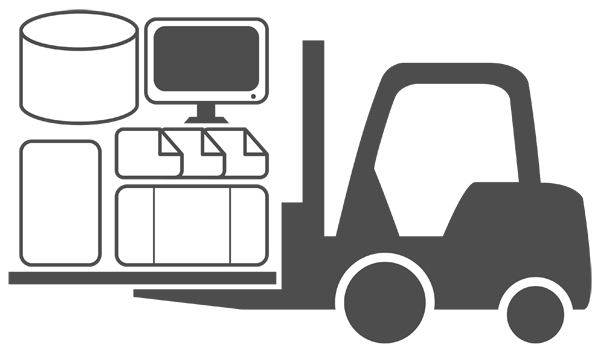Forklifting in a new solution
In this post, we’ll take a close look at perhaps one of the most common solutions addressing the challenge of new mobile demands on legacy systems adopted by large organizations. With the exception of “doing nothing,” the most commonly adopted solution is the forklift option—basically burning the legacy infrastructure to the ground and building it back up again using different technology solutions.
This solution completely replaces the existing mainframe online processing environment. All online components are replaced: the transaction processing and legacy interface, along with the legacy database. All new transaction processing, interfaces and databases are developed on distributed or zLinux platforms.

While all online components are replaced, they will first be leveraged as a starting point for the new purpose-built components. They will then be discarded or archived. This includes the following components:
- Data Storage (DB2, IMS, VSAM, IDMS, QSAM, Oracle, etc.) is used as a source for replication to the new data store—then discarded / archived.
- Legacy Transaction Programs are used as a starting point for new apps—then discarded / archived.
- Legacy Transaction Server will also drive part of the new transaction server development—then discarded / archived.
Note that legacy batch applications and infrastructure need to be either retained and managed on the mainframe, or reengineered and ported to distributed or zLinux systems.
Benefits of System Forklift
- Allows for enterprise wide re-engineering and modernization.
- Modernization of all the code to modern languages, tools and frameworks will make finding suitably skilled staff easier.
- An opportunity to optimize where workloads run, allowing platforms to be chosen that best manage the current and future workloads.
- An opportunity to take advantage of many technology advancements that have taken place since the original application was written.
Drawbacks of System Forklift
- This solution will involve large amounts of recoding (reinventing the wheel) — new code that will replace existing code that already performs much of the needed functionality.
- It will require a large business analysis project to work out what the legacy code did (and the many paths that a user interaction can follow).
- It will be a long, high-risk and extremely expensive process.
Development Details
This approach will provide the rich experience needed for web and mobile users, and can be reached over time. A rewrite of the entire system is an obvious choice; it doesn’t have to occur all at once with one or more of the previous solutions being a stepping stone to this final goal. Several organizations have developed special skills with associated tools to help them through this process.